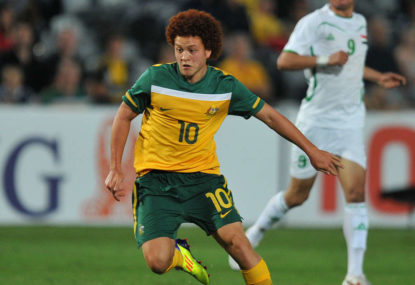Well, they were a rather enjoyable twelve nights, weren’t they?
The Asian Cup group stage has reached its end and, on the balance of things, you’d have to say all expectations were exceeded.
The sixteen best teams in our vast, diverse region of the world punched and counter-punched during 24 matches which yielded an average of 2.54 goals per game and, incredibly, not a single draw – let alone a goalless one.
Bar some occasionally unconvincing finishing, and dodgy defending from North Korea and others, the quality of play has been decent. The matches played in a friendly spirit, with neither persistent feigning of injury nor lacklustre refereeing blighting the tournament as some may have feared.
The usual hierarchy of Asian football has largely stayed in place. The competing teams can roughly grouped into three categories – strong, average and poor. The four sides with three wins from three (South Korea, Japan, Iran and surprise packet China) as well as leading scorers, Australia, have been the stand outs.
Korea, Japan and Iran have all yet to concede a goal.
Average teams include Saudi Arabia and Jordan. The weak consist of North Korea and Palestine.
That is not to say Palestine haven’t contributed to what has been an engrossing first fortnight. The story of where they’ve come from and the support they’ve galvanised has provided just one of the compelling human-interest narratives of Australia 2015.
Indeed, the further their match against Jordan went on and the further their side fell behind, the night felt less like a football match and more a political rally. Free Palestine banners were raised and chants to that effect reverberated around the re-branded Melbourne Rectangular Stadium.
Amongst the crowd of just under 11,000 were exiled Palestinians, plenty of women, Socialist Alternative-types in solidarity, as well as people who obviously don’t attend football often. It was an unusual night which saw community carnival vibes, irresolvable global politics and mega-corporate international football tournament roll into one.
The North Korea-Saudi Arabia provided similar fascination for neutrals. A lot was written and said before and after these two played off in what some on Twitter dubbed the ‘Human Rights Cup’.
Inside the Melbourne ground, Kim Jong Un masks were confiscated, an ironic twist to locals mockingly worshipping a totalitarian leader. People were also blocked from going to join an organically growing and happy band of North Korean support in the North End.
Those who stand on A-League terraces week in, week out, won’t be surprised to learn of such restrictions on spontaneity and fun.
Organisers do deserve credit, though, for cheap ticket prices which has allowed all classes of fan to attend numerous matches in droves. An average crowd of over 13,000 is staggering when considering the lack of genuine superstars.
As of Thursday morning, the aggregate attendance sits just under 400,000. TV viewership across the continent, particularly east Asia, is scaling new heights.
Summer scheduling has helped – I reckon there’d be half the numbers in attendance if this were held during AFL/NRL winter – as has a compact format and close proximity of matches.
This fortnight has whet the appetite for tournament football down under. Imagine what a World Cup here would be like…
The pitches have been criticised, though matches played in proper football stadia has increased atmosphere. The vibrant Iranian support, in particular, has got tongues wagging.
In return, we’re learning more about these countries, their cultures, idiosyncrasies and football teams. Only the most ardent fans would have known about the Omar Abdulrahman prior to 2015. Now, he alone makes UAE matches well worth watching. For his own sake, I hope he moves to Europe.
Teams have been accessable, too, spending time with their communities and locals in their downtime. The Jordanians, for example, spent time camped in Glen Waverley, a middling Melbourne suburb, and trained at Mazenod College, a middling private school.
With matches roughly every four days, the fittest teams will prosper. In this regard, Australia has an advantage. Limited opposition notwithstanding, some of the football the Socceroos have showcased has been mouth-watering.
The tournament has got off to a flyer and the home nation has played their part.
Massimo Luongo, in particular, has thrived in a newish 4-1-2-3 formation, with the defence looking relatively comfortable in front of Mat Ryan who has bounced back superbly after enduring some unfair criticism last June. With their desire, intent and ability to create chances, I expect we’ll make the semi final at least. And on home soil – where Australia’s record remains formidable – who knows from there.
On so many levels, the 2015 Asian Cup has been a compelling event to follow. Though the goals will likely dry up, the stakes are set to intensify. Bring on the knock-out rounds.
Twitter: simmo_melb89






























































































